your current location is:Home > TechnologyHomeTechnology
How do astronauts on the International Space Station tell the difference between day and night?
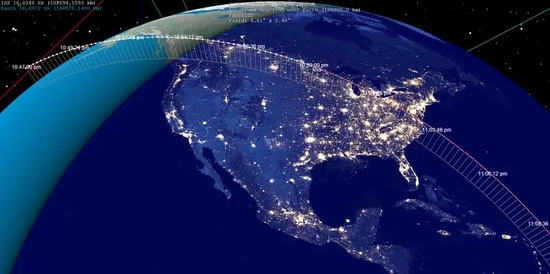 The orbit of the International Space Station traverses day and night.
The orbit of the International Space Station traverses day and night.according to reports, when we were young, day and night meant nothing to us but "how long until the next holiday". As we grow older, day and night become an endless cycle of work goals, deadlines, repayment dates. Some people experience the beauty and mystery of the day-night cycle, while for others it's nothing more than the result of the Earth's rotation.
Regardless of your understanding of day and night, for all living things on Earth, day and night are a cycle of light and dark that repeats every 24 hours.
However, these definitions no longer apply once you leave our planet. For example, the astronauts on the International Space Station, have you ever wondered what day and night they feel like?
Why is there day and night?
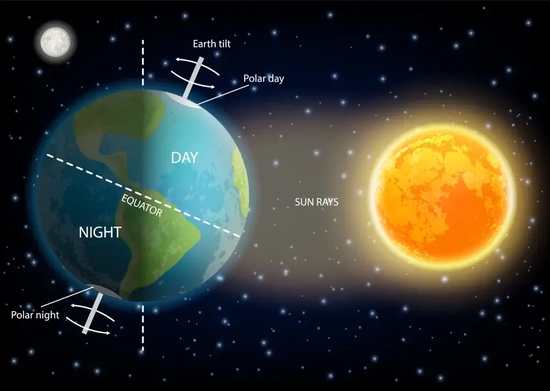 The rotation of the earth creates day and night.
The rotation of the earth creates day and night.In addition to revolving around the sun in an elliptical orbit, the earth also rotates on its axis. During the rotation, the side facing the sun is in "day" and the side not exposed to the sun is in "night". The Earth rotates very fast, about 1670 kilometers per hour, but even so, it takes 24 hours for the Earth to make one revolution. So our day is 24 hours long, about 12 hours in the sun and 12 hours in the dark.
What does day and night look like on the International Space Station?
International Space Station
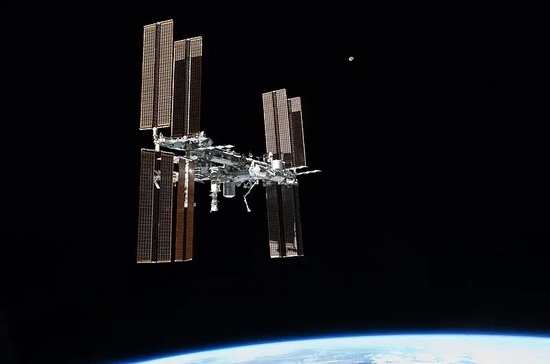 The ISS orbits so close to the surface that it can be seen with the naked eye.
The ISS orbits so close to the surface that it can be seen with the naked eye.The International Space Station usually carries 5 to 7 astronauts, do they also experience day and night changes on it? If so, is it similar to day and night on Earth?
Day and night on the International Space Station
The International Space Station operates at a speed of up to 27,600 kilometers per hour, making one lap about every 90 minutes. During this period, the space station is in sunlight about half of the time and in Earth's shadow the other half. So each time the space station rotates, it experiences about 45 minutes of light and 45 minutes of darkness.
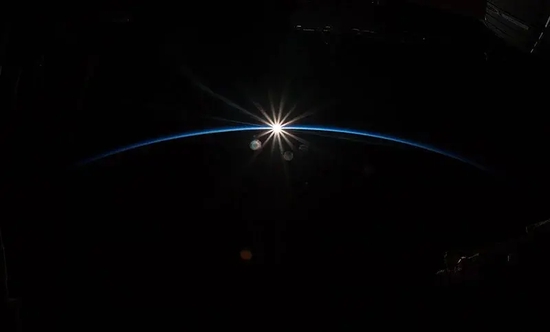 Sunrise from the International Space Station. Photographed by German astronaut Alexander Gerst.
Sunrise from the International Space Station. Photographed by German astronaut Alexander Gerst. Sunset seen from the International Space Station.
Sunset seen from the International Space Station.In 24 hours, the International Space Station orbits the Earth 16 times. So for every passing day on Earth, astronauts on the International Space Station witness 16 sunrises and sunsets.
Why frequent day and night switching is a problem
Being able to see the sunrise from space 16 times a day may sound cool at first, but it could cause a serious problem in the long run.
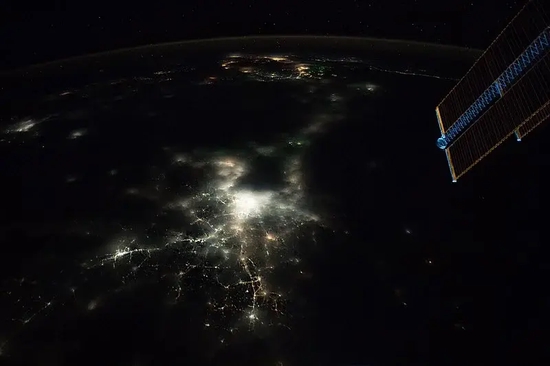 Night view of Earth taken from the International Space Station.
Night view of Earth taken from the International Space Station.The human body operates on a 24-hour cycle, and light plays a key role in regulating the cycle. Our circadian rhythm follows the pattern of light on Earth, working at sunrise and resting at sunset. So rapid day-night switching can adversely affect astronauts' biological clocks.
But we can't keep these astronauts who have undertaken one of the most important missions in the world in a state of constant "jet lag", so we must create a "normal" day and night environment on the International Space Station.
How the International Space Station simulates normal day and night conditions
1. Fix a time zone
The International Space Station uses Coordinated Universal Time. This is a set of global time standards, determined by two factors: one is the International Atomic Time calculated by a high-precision atomic clock; the other is the universal time based on the rotation of the earth. All time zones around the world are adjusted according to Coordinated Universal Time.
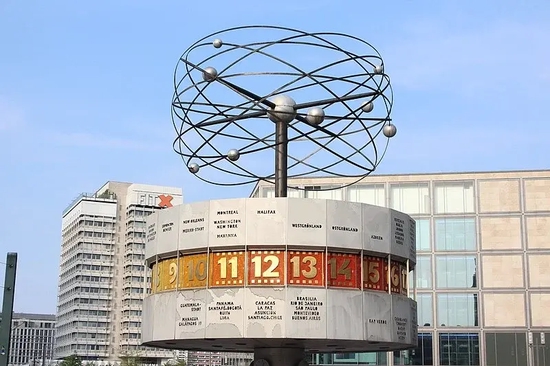 World Clock in Berlin.
World Clock in Berlin.Why use Coordinated Universal Time?
As mentioned above, the International Space Station is a multi-national cooperation project involving the participation of five space agencies located around the world. Therefore, coordinating Universal Time is undoubtedly the best choice, which can promote effective cooperation between agencies.
2. Controlling Lighting on the International Space Station
In the early days of the International Space Station mission, it was found that even though astronauts were allotted 8.5 hours of sleep each day, they were still not sleeping well. So scientists decided to adjust the lighting on the space station.
In fact, "the effect of light on the human body" is one of the experiments carried out by NASA on the International Space Station.
The International Space Station began with a "general lighting assembly" system, which used fluorescent lamps to provide lighting. In 2016, these modules were replaced by "solid-state LED modules," which are longer-lasting, less expensive, and brighter. LED lights can also change the intensity and wavelength of illumination, making them ideal for simulating realistic day and night conditions on the space station.
An Astronaut's Day on the International Space Station
On the International Space Station, an astronaut's workday begins at 6 a.m. UTC and ends at 9 p.m. UTC.
For the first few hours, the light was set to be brighter, simulating daytime lighting levels. When astronauts need to perform more challenging tasks, the wavelength of light will be adjusted to be closer to the wavelength of blue light, thereby improving astronauts' wakefulness and alertness. At the end of the day, the light is turned to warmer light to help astronauts sleep better.
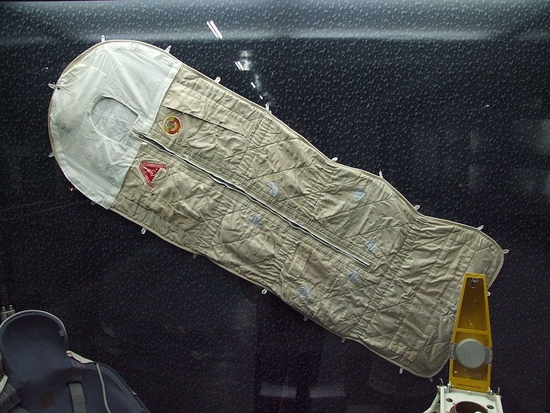 sleeping bag.
sleeping bag.Between 9:30 p.m. and 6 a.m. the next day, the light will be dimmed to simulate a nighttime environment. This way, after the astronauts have finished their day's work, they can lie down comfortably in their sleeping bags and get a good night's rest. Subsequent studies have found that such a light pattern can help improve the work efficiency of astronauts. These findings have also contributed to the commercial promotion of LED products such as "mood lights".
relax for a moment
The International Space Station has taken several steps to ensure that astronauts maintain a normal routine. However, if astronauts want to enjoy the bizarre view of space, they only need to stay in the dome for a while, and they can spend a full "day" in just 90 minutes.
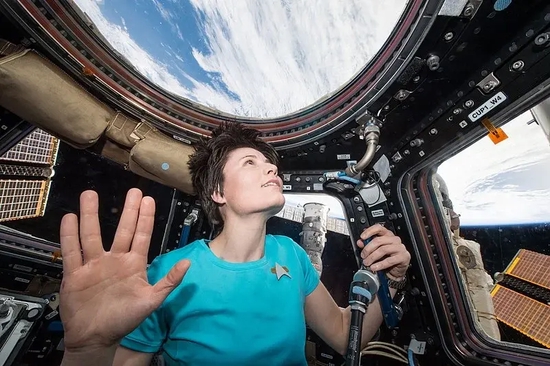 The dome on the International Space Station.
The dome on the International Space Station.related articles
Article Comments (0)
- This article has not received comments yet, hurry up and grab the first frame~













